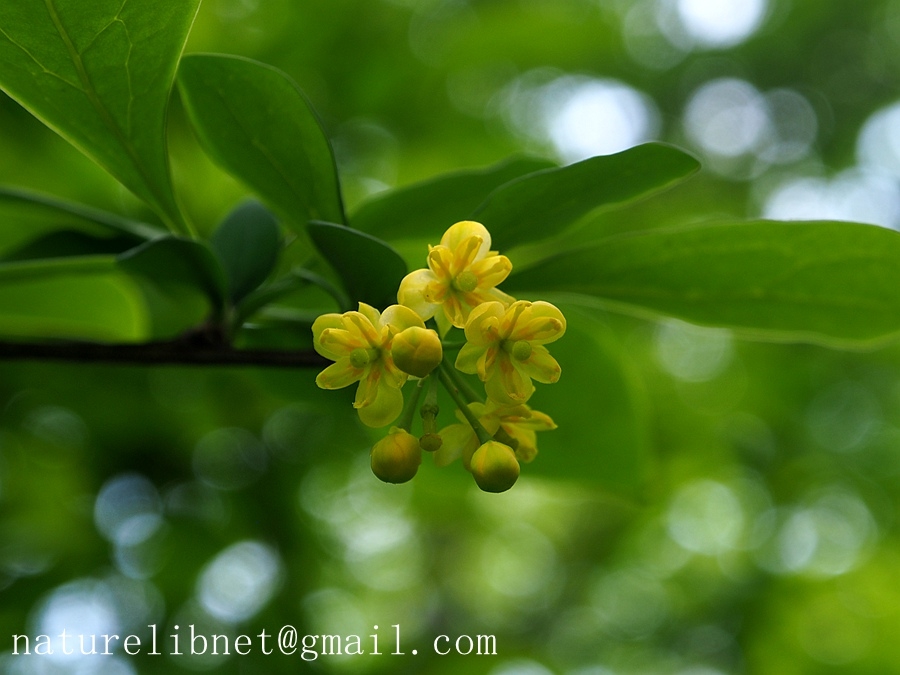- Scientific Name: Berberis virgetorum C. K. Schneider
- Ref: Sargent, Pl. Wilson. 3: 440. 1917.
- Synonyms: Berberis chekiangensis Ahrendt; B. pingjiangensis Q. L. Chen & B. M. Yang.
- Chinese Common Name: 庐山小檗 Lú shān xiǎobò
- Family: Berberidaceae
- Genus: Berberis
- Distribution: Montane thickets, forests, riversides, beside houses; 200-1800 m. Anhui, Fujian, Jiangxi, Guangdong, Guangxi, Guizhou, Hubei, Hunan, Shaanxi, Zhejiang.
- Photo: 04/12/2016
Shrubs, deciduous, 1.5-2 m tall. Branches grayish yellow, angulate, not verruculose; shoots purplish brown; spines simple, occasionally 3-fid, 1-4 cm, adaxially sulcate. Petiole 1-2 cm; leaf blade abaxially grayish white, adaxially dark yellow-green, oblong-rhombic, 3.5-8 × 1.5-3.5(-7) cm, thinly papery, abaxially with obviously raised midvein and lateral veins, adaxially with slightly raised midvein, lateral veins conspicuous, base cuneate, attenuate to petiole, margin completely entire, sometimes slightly undulate, apex acute. Inflorescence a raceme, 3-15-flowered, 2-5 cm including peduncle 1-2 cm; bracts lanceolate, 1-1.5 mm, apex acuminate. Pedicels 4-8 mm, slender, glabrous. Sepals in 2 whorls; outer sepals oblong-ovate, 1.5-2 × 1-1.2 mm; inner sepals oblong-obovate, ca. 4 × 1-1.8 mm, apex obtuse. Petals elliptic-obovate, 3-3.5 × 1-1.8(-2.5) mm, base clawed, with separate oblong glands, apex obtuse, entire. Stamens ca. 3 mm; anther connective not prolonged, obtuse. Ovules solitary, sessile. Berry red, oblong-ellipsoid, 8-12 × 3-4.5 mm, not pruinose, style not persistent. Fl. Apr-May, fr. Jun-Oct.(Flora of China)
